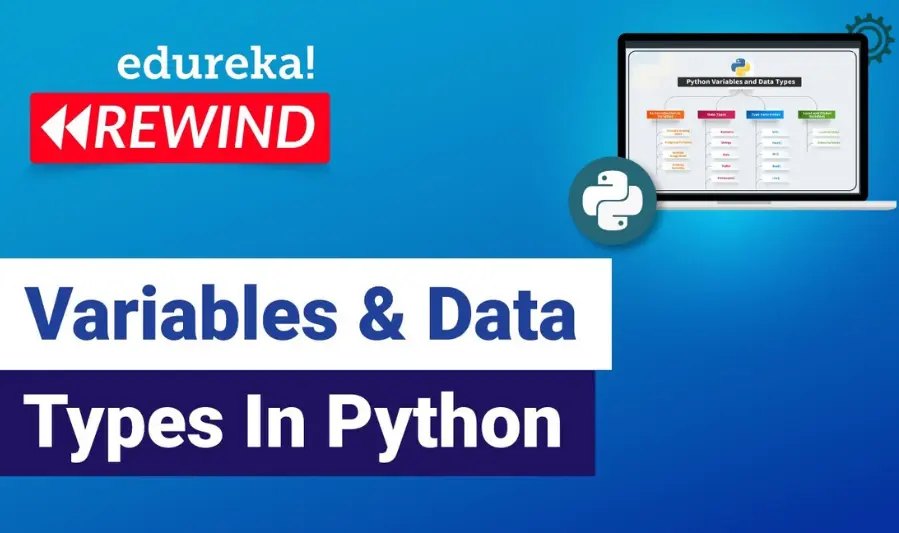Introduction
Overview of Java and Its Significance
Java is a widely-used, beginner-friendly, object-oriented programming language. It powers everything from desktop applications to web development, Android apps, and enterprise software. Its platform independence—thanks to the Java Virtual Machine (JVM)—makes it a versatile choice for developers worldwide.
Importance of Learning Java Step by Step
Learning Java gradually, with clear explanations and examples, helps beginners understand programming concepts without feeling overwhelmed. Focusing on core fundamentals first ensures a strong foundation before moving on to advanced topics.
What Readers Will Gain
By following this tutorial, readers will:
- Learn Core Java concepts through step-by-step instructions.
- Gain hands-on experience by writing and running programs.
- Develop problem-solving and logical thinking skills applicable in real-world coding.
Why Learn Java?

Platform-Independent and Versatile
Java programs can run on any device or operating system that has the Java Virtual Machine (JVM). This “write once, run anywhere” feature makes Java highly versatile for developers.
Widely Used in Industry
Java is a popular choice in Android app development, web applications, and enterprise-level software. Learning Java opens opportunities in multiple domains, from mobile apps to backend systems.
Builds a Strong Programming Foundation
Learning Java helps beginners understand core programming concepts such as variables, loops, conditionals, and object-oriented programming. These fundamentals are transferable, making it easier to learn other languages like C#, Python, or Kotlin in the future.
Setting Up Your Java Environment
1. Install JDK (Java Development Kit)
The JDK contains everything you need to compile and run Java programs, including the compiler (javac) and runtime (java).
Steps:
- Download the latest JDK from the official Oracle website or OpenJDK.
- Run the installer and follow instructions.
- Set the JAVA_HOME environment variable (optional but recommended).
- Verify installation by opening a terminal/command prompt and typing:
java -version javac -version
2. Choose an IDE (Integrated Development Environment)
An IDE helps write, compile, and debug Java programs efficiently. Popular options:
- Eclipse – Beginner-friendly, widely used in enterprises.
- IntelliJ IDEA – Smart code completion and debugging tools.
- VS Code – Lightweight editor with Java extensions.
Tip: Start with the IDE you find easiest; you can switch later as you gain experience.
3. Test Your Setup with a Simple Program
Write a basic Hello World program to ensure everything works:
public class HelloWorld {
public static void main(String[] args) {
System.out.println("Hello, Java is set up!");
}
}
Steps:
- Create a new Java project in your IDE.
- Add a new class named
HelloWorld. - Copy the above code and run it.
- If you see the message printed, your environment is ready.
4. Tips for Beginners
- Ensure correct JDK version matches your IDE settings.
- Avoid spaces in folder paths when setting up environment variables.
- Always test with a small program before starting larger projects.
- Keep your IDE and JDK updated to the latest stable versions.
4. Java Learning Tutorials with Explanations
4.1 Hello World Program
Purpose
A basic program to understand Java syntax, class structure, and output statements.
Code Example
public class HelloWorld {
public static void main(String[] args) {
System.out.println("Hello, Java!");
}
}
Explanation:
public class HelloWorld→ Defines a class namedHelloWorld.public static void main(String[] args)→ Main method where the program starts.System.out.println(...)→ Prints text to the console.
4.2 Variables and Data Types

Concept
Learn primitive (int, float, char, boolean) and non-primitive (String, Arrays, Objects) data types.
Example
int age = 20; // integer
double price = 99.99; // decimal number
char grade = 'A'; // single character
boolean isJavaFun = true; // true/false
String name = "Alice"; // text
Best Practices:
- Use meaningful variable names.
- Initialize variables before use.
4.3 Operators and Expressions
Concept
Perform arithmetic, comparison, and logical operations.
Example
int a = 10, b = 5;
System.out.println(a + b); // Addition: 15
System.out.println(a > b); // Comparison: true
System.out.println(a != b && b < 10); // Logical: true
Explanation:
+,-,*,/→ Arithmetic operators.>,<,==,!=→ Comparison operators.&&,||,!→ Logical operators.
4.4 Control Statements
Decision-Making Statements
int num = 8;
if (num % 2 == 0) {
System.out.println("Even number");
} else {
System.out.println("Odd number");
}
Loops
for (int i = 1; i <= 5; i++) {
System.out.println("Iteration: " + i);
}
Explanation:
if-else→ Choose between conditions.switch→ Multiple conditions based on a variable.- Loops (
for,while,do-while) → Repeat code efficiently.
4.5 Object-Oriented Programming (OOP) Basics
Concept
Understand class, object, method, and encapsulation.
Example
class Car {
String color;
void displayColor() {
System.out.println("Car color: " + color);
}
}
public class Main {
public static void main(String[] args) {
Car myCar = new Car();
myCar.color = "Red";
myCar.displayColor();
}
}
Explanation:
Car→ Class with a property (color) and a method (displayColor).myCar→ Object of theCarclass.- Demonstrates encapsulation by combining data and methods.
4.6 Arrays and Strings
Arrays
int[] numbers = {10, 20, 30};
for (int num : numbers) {
System.out.println(num);
}
Strings
String name = "Alice";
System.out.println(name.length()); // 5
System.out.println(name.charAt(0)); // 'A'
Explanation:
- Arrays store multiple values.
- Strings can be manipulated using built-in methods like
.length()and.charAt().
4.7 Methods and Functions
Concept
Create reusable blocks of code with parameters and return types.
Example
public class Calculator {
int add(int a, int b) {
return a + b;
}
public static void main(String[] args) {
Calculator calc = new Calculator();
int result = calc.add(5, 10);
System.out.println("Sum: " + result);
}
}
Explanation:
add→ Method that takes two parameters and returns a value.- Methods make code modular and reusable.
Common Mistakes Beginners Make
1. Forgetting Semicolons or Braces
Concept: Syntax Errors
Missing semicolons ; or braces {} is a frequent cause of compilation errors.
Example:
public class Test {
public static void main(String[] args) {
System.out.println("Hello World") // Missing semicolon
} // Missing closing brace for main method
}
Tip:
- Always end statements with a semicolon.
- Check that every opening brace
{has a matching closing brace}.
2. Confusing = and ==
Concept: Assignment vs. Comparison
=assigns a value to a variable.==compares two values.
Example:
int x = 5;
if (x = 10) { // Wrong! Should be x == 10
System.out.println("x is 10");
}
Tip: Use == in conditional checks and = only for assignment.
3. Misunderstanding Loops or Conditionals
Concept: Logical Errors
Beginners sometimes write loops that never end or conditions that never execute.
Example (infinite loop):
int i = 0;
while (i < 5) {
System.out.println(i); // i is never incremented → infinite loop
}
Tip:
- Always update loop counters.
- Carefully check conditional statements for logic errors.
- Test small parts of your code frequently.
4. Tips to Avoid Errors and Improve Debugging
- Write code in small chunks and test frequently.
- Use meaningful variable names to make logic clear.
- Add comments to explain complex sections.
- Use IDE features like syntax highlighting, auto-completion, and debugging tools.
- Read error messages carefully; they often indicate the exact problem.
Tips for Learning Java Effectively
1. Practice Coding Daily
Concept: Consistency Builds Skill
Programming is learned by doing, not just reading. Writing small programs every day reinforces concepts and improves problem-solving skills.
Tip: Set aside 30–60 minutes daily to code, even with simple exercises like printing patterns or arithmetic calculations.
2. Start with Small Programs and Gradually Increase Complexity
Concept: Step-by-Step Learning
Begin with basic programs (Hello World, arithmetic operations) and slowly move to loops, arrays, and OOP concepts.
Tip: Break problems into smaller parts and solve them incrementally. This prevents feeling overwhelmed.
3. Use Online Coding Platforms for Exercises
Concept: Practice and Feedback
Platforms like LeetCode, HackerRank, CodeChef, and Replit provide challenges and instant feedback. They improve logic, algorithmic thinking, and Java syntax familiarity.
Tip: Solve beginner-level problems first, then gradually tackle intermediate challenges.
4. Read, Modify, and Experiment with Sample Code
Concept: Learning by Exploration
Studying existing code helps understand how different Java concepts work in real programs. Modifying and experimenting reinforces learning.
Tip: Change values, add print statements, or rewrite logic to see different outcomes.
5. Join Programming Communities for Guidance
Concept: Peer Learning and Motivation
Communities provide support, feedback, and motivation. You can ask questions, share projects, and learn from experienced developers.
Examples:
- Stack Overflow
- Reddit r/learnjava
- Discord programming servers
Tip: Don’t just read; participate by asking questions or helping others—it strengthens your own understanding.
Smart Budget Planning for Families: A Practical Guide to Financial Harmony
Discover the Beauty of Indonesian Traditional Fashion Styles
Learn Java Easily Online with Simple Coding Examples
Easy Core Java Tutorials for Beginners to Start Coding
Additional Practice Ideas
1. Even/Odd Number Checker
Concept: Practice conditional statements and modulus operator %.
Exercise: Write a program that takes a number as input and prints whether it is even or odd.
Example:
int number = 7;
if (number % 2 == 0) {
System.out.println("Even");
} else {
System.out.println("Odd");
}
2. Simple Calculator Program
Concept: Practice arithmetic operations and switch-case statements.
Exercise: Create a program that takes two numbers and an operator (+, -, *, /) and displays the result.
3. Sum or Average of Array Elements
Concept: Work with arrays and loops.
Exercise: Write a program that calculates the sum and average of numbers stored in an array.
Example:
int[] numbers = {10, 20, 30, 40};
int sum = 0;
for (int num : numbers) {
sum += num;
}
double average = sum / (double) numbers.length;
System.out.println("Sum: " + sum);
System.out.println("Average: " + average);
4. Pattern Printing with Loops
Concept: Strengthen understanding of nested loops and logic.
Exercise: Print simple patterns like stars (*) or numbers.
Example (triangle pattern):
for (int i = 1; i <= 5; i++) {
for (int j = 1; j <= i; j++) {
System.out.print("* ");
}
System.out.println();
}
Tip: Start with small patterns and gradually try more complex designs to master loops and iteration logic.
Faqs:
Can beginners learn Java without prior programming experience?
Yes, these tutorials are designed for absolute beginners and provide clear explanations for each concept, making it easy to start learning Java from scratch.
How long will it take to learn Java basics?
With regular practice and working through simple programs daily, beginners can grasp Java fundamentals in about 3–4 weeks.
Can I practice Java coding online without installing software?
Yes, platforms like Replit, HackerRank, and CodeGym allow you to write, run, and test Java programs online without installing anything.
What topics should I learn after mastering Java basics?
After learning the basics, you can move on to advanced topics such as Collections, Multithreading, JDBC, and Java frameworks like Spring and Hibernate.
Why are explanations important while learning Java?
Explanations help beginners understand the logic behind each program, making it easier to debug, modify, and write your own code confidently.
Conclusion
Learning Java step by step with clear tutorials and explanations is the most effective way for beginners to build strong programming skills. Starting with simple programs like Hello World, variables, loops, and basic OOP concepts helps you understand the logic behind each program. Consistent practice, experimenting with code, and gradually moving to advanced topics will make you a confident Java developer.





